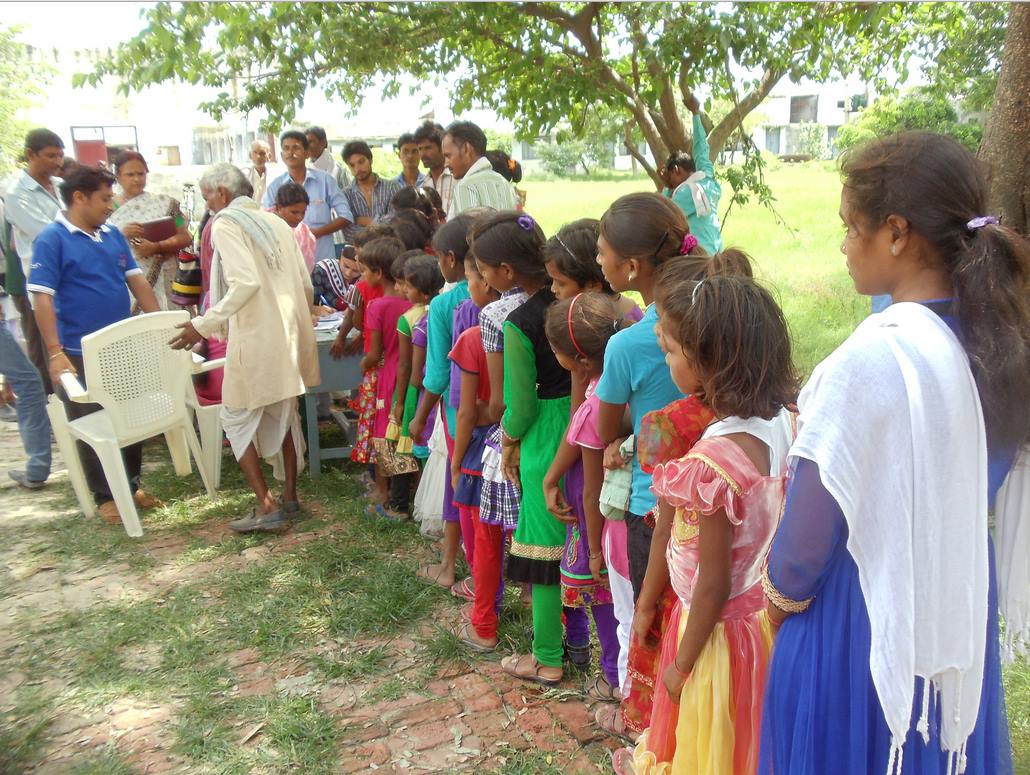HIGHLIGHTS
- Mr. Jones helps 100 Hardoi girls again in 2025, continuing a remarkable tradition of personal philanthropy.
- This support empowers young girls in rural Uttar Pradesh who have never attended school.
- The initiative is coordinated by Sarvodaya Ashram, Tadiyawan, Hardoi, led by Vice President Pamela Chatterjee (“Didi”).
- Ashram Secretary Ms. Kusum Jauhari shared a heartfelt Facebook post thanking Mr. Jones.
- Over five years, Mr. Jones helps 100 Hardoi girls has become a model for international-local collaboration in education.
A Generous Legacy: Mr. Jones Helps 100 Hardoi Girls Every Year
When we speak of global citizens making a meaningful difference, few stories are as touching and impactful as the one where Mr. Jones helps 100 Hardoi girls each year. In a quiet, rural part of Uttar Pradesh, India, a non-profit educational initiative called Sarvodaya Ashram has become the conduit of this remarkable act of generosity. Mr. Jones, a private donor from abroad, has been personally funding the education of 100 underprivileged girls in Hardoi every year since 2020.
This year, in July 2025, the announcement was made yet again: Mr. Jones helps 100 Hardoi girls, continuing his noble mission to support education in rural India. His donations cover school materials, uniforms, learning resources, and basic nutritional support — everything needed to ensure that these girls not only attend school but thrive in it.
Sarvodaya Ashram: The Local Force Behind the Movement
At the heart of this story is Sarvodaya Ashram, located in Tadiyawan, Hardoi. Established decades ago with a vision of empowering marginalized communities, the ashram runs education and development programs focused on girls who have never been to school.
Pamela Chatterjee, fondly known as “Didi,” serves as the Ashram’s Vice President and was instrumental in convincing Mr. Jones to support the cause. Her deep connection to grassroots challenges and her persuasive advocacy brought Mr. Jones on board. Since then, Mr. Jones helps 100 Hardoi girls annually, owing much to her inspiration and consistent engagement.
How It Began: A Simple Appeal That Sparked a Movement
The journey started with a compelling appeal. Didi once shared the story of girls who, because of poverty, patriarchy, or lack of access, had never set foot in a school. Touched by the urgency of the situation, Mr. Jones asked how he could help. He offered to fund the education of 100 girls that year — and he has kept his word for five consecutive years.
In an emotional social media post, Sarvodaya Ashram Secretary Ms. Kusum Jauhari recently shared a photograph with the caption:
“Mr. Jones helps 100 Hardoi girls again! Thank you DIDI and Mr. Jones!!!”
The post quickly resonated with supporters of girl-child education across India and abroad.
Impact on the Ground: Real Stories, Real Change
The program where Mr. Jones helps 100 Hardoi girls has transformed countless lives. Many of the girls enrolled through this support have gone on to complete primary education, join middle school, and even prepare for high school exams. Some are now peer mentors, inspiring the next batch of first-generation learners.
Take the story of 13-year-old Nisha from Shahpur Mughal village. Until last year, she worked alongside her mother in agricultural fields. Today, she can read and write fluently in Hindi and is learning basic English and mathematics at one of the learning centers supported through Mr. Jones’s funding.
How the Support Works
Each year, Mr. Jones transfers a fixed amount to the Sarvodaya Ashram’s education fund. The Ashram, identifies 100 out-of-school girls from remote villages. The funds are then used to:
- Enroll the girls into Learning Centers
- Purchase books, school bags, stationery, and uniforms
- Offer regular meals or nutrition kits
- Train teachers from the local community
- Track academic progress and health metrics
This direct and transparent model ensures that every rupee is spent on the girl’s welfare — an accountability that Mr. Jones deeply values.
Pamela Chatterjee “Didi”: The Visionary Behind the Partnership
Ms. Pamela Chatterjee, also the author of several books on grassroots development, continues to be the visionary spirit behind this initiative. Her bond with the girls is deeply personal. She visits learning centers regularly, meets parents, and encourages community participation.
Her efforts prove that sustainable development happens when local leadership and international goodwill align. And Mr. Jones helps 100 Hardoi girls is the perfect example of this collaboration.
Global Donor, Local Impact
While Mr. Jones prefers to stay away from public attention, his consistent support has drawn the admiration of many. In a rare statement shared through the Ashram, he once said:
“Helping 100 girls each year might not change the world. But it changes the world for those 100 girls. That’s enough for me.”
His humility, matched with his generosity, sets a new benchmark for individual philanthropy.
The Bigger Picture: Education as a Right, Not a Privilege
The initiative titled Mr. Jones helps 100 Hardoi girls is not just a charity drive; it’s a rights-based campaign. According to a UNICEF report (2024), over 1.6 million girls in India aged 6–14 remain out of school, especially in rural and marginalized communities.
Programs like this play a crucial role in bridging the gap. They challenge societal norms, instill confidence in young girls, and reinforce the message that education is not a privilege — it’s a fundamental right.
A Ripple Effect of Hope and Change
In a world often overwhelmed by cynicism and inequality, the story where Mr. Jones helps 100 Hardoi girls shines like a ray of hope. It shows that one person’s decision to care, support, and act can create a ripple effect across continents, cultures, and generations.
As Hardoi’s villages continue to echo with laughter, lessons, and the rustle of new school uniforms, it is clear that this isn’t just about 100 girls each year. It’s about changing the narrative — from neglect to empowerment, from silence to opportunity.

